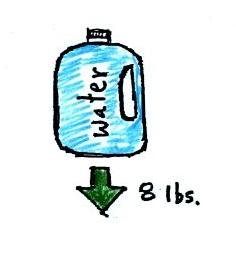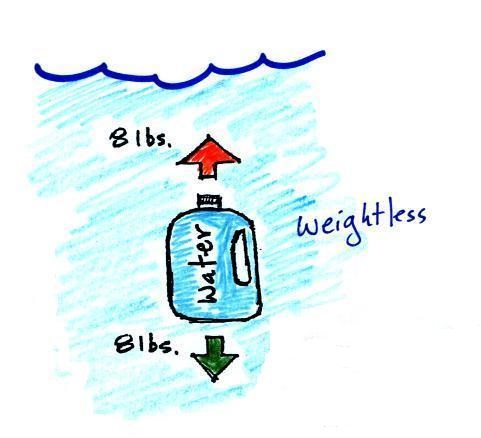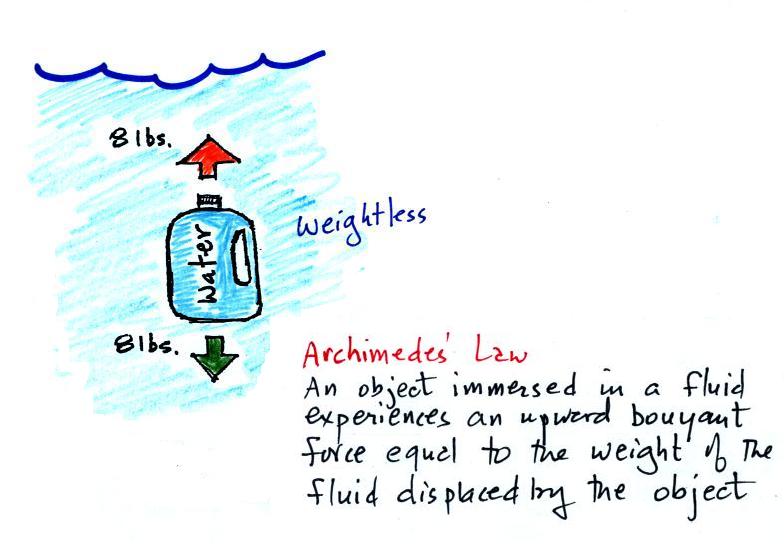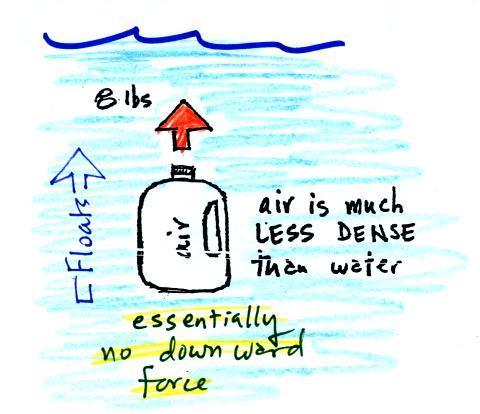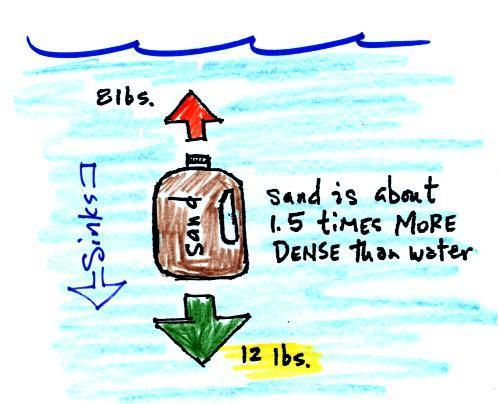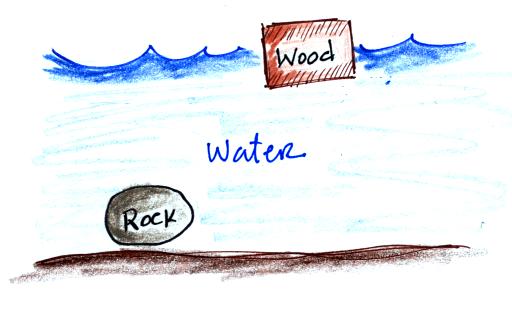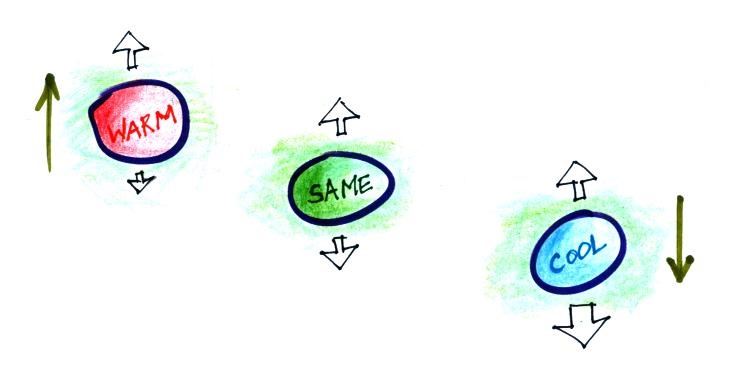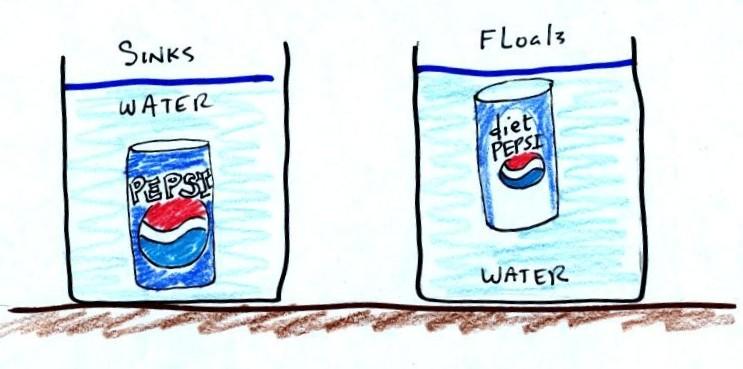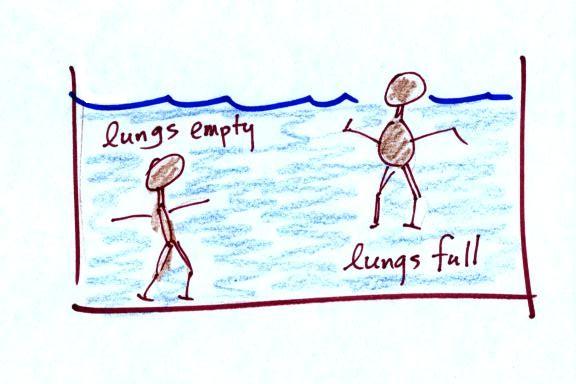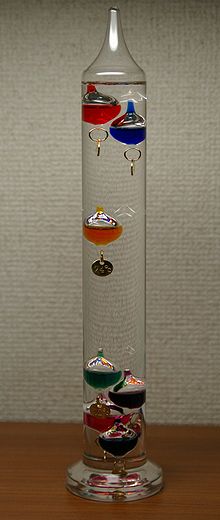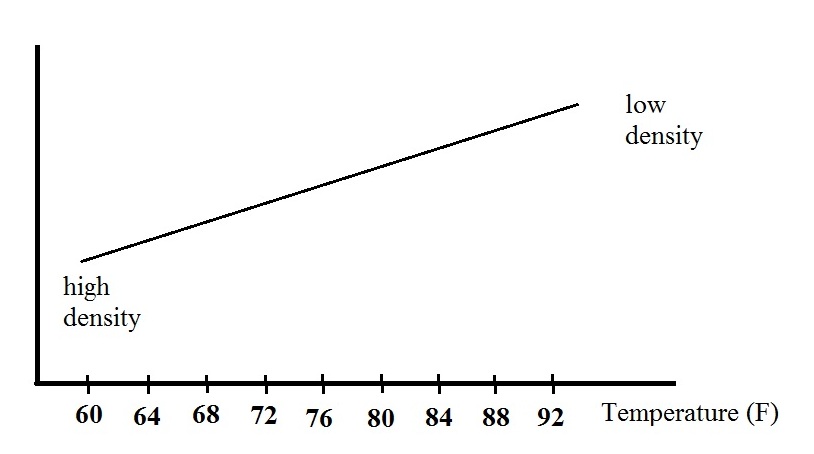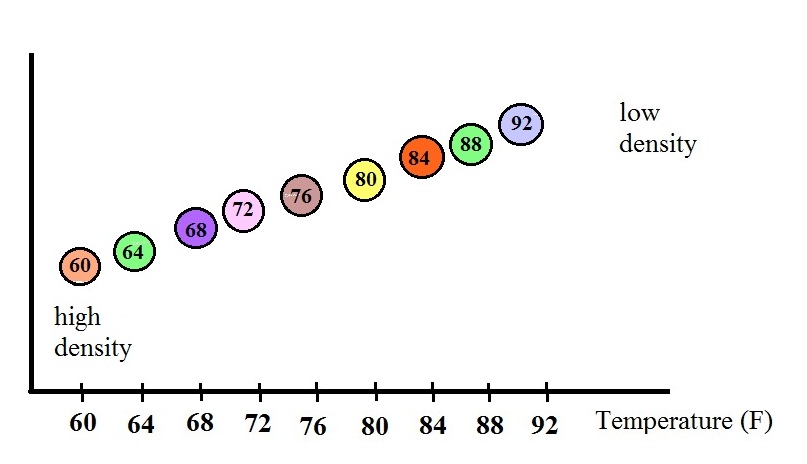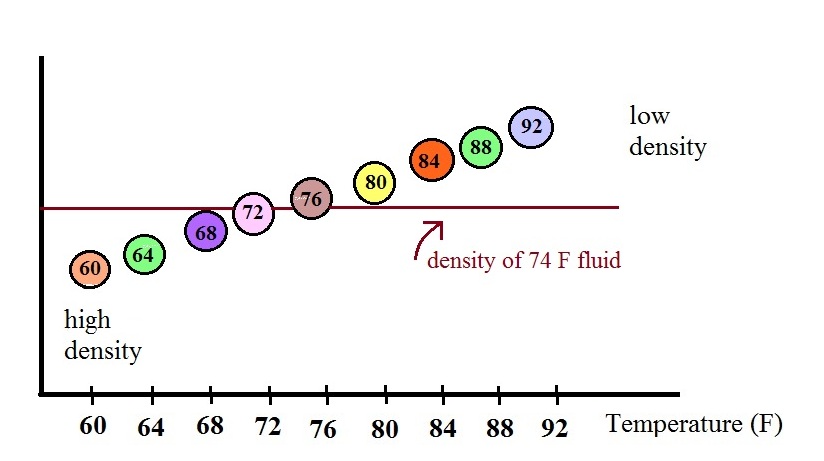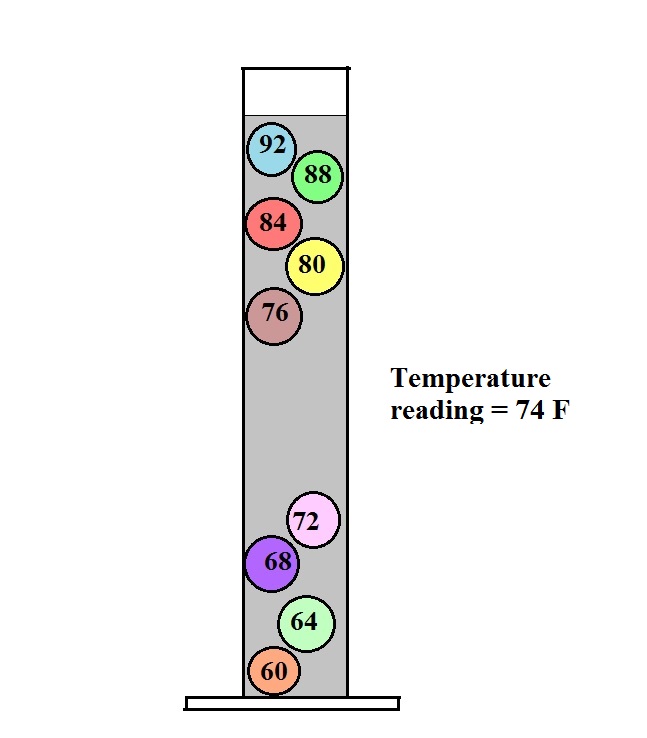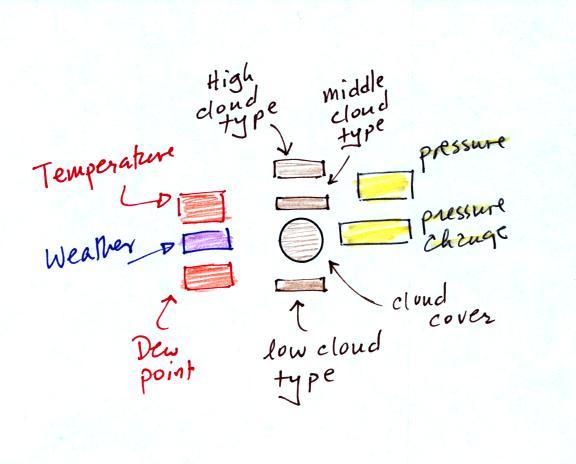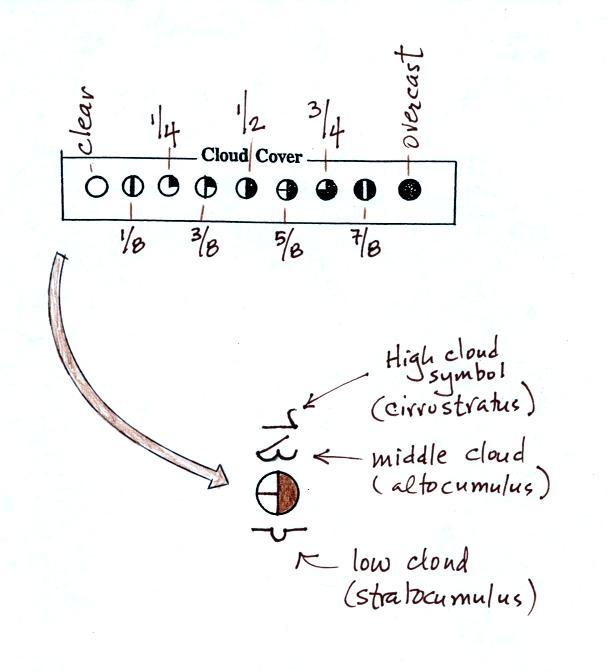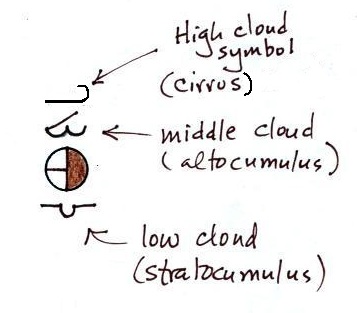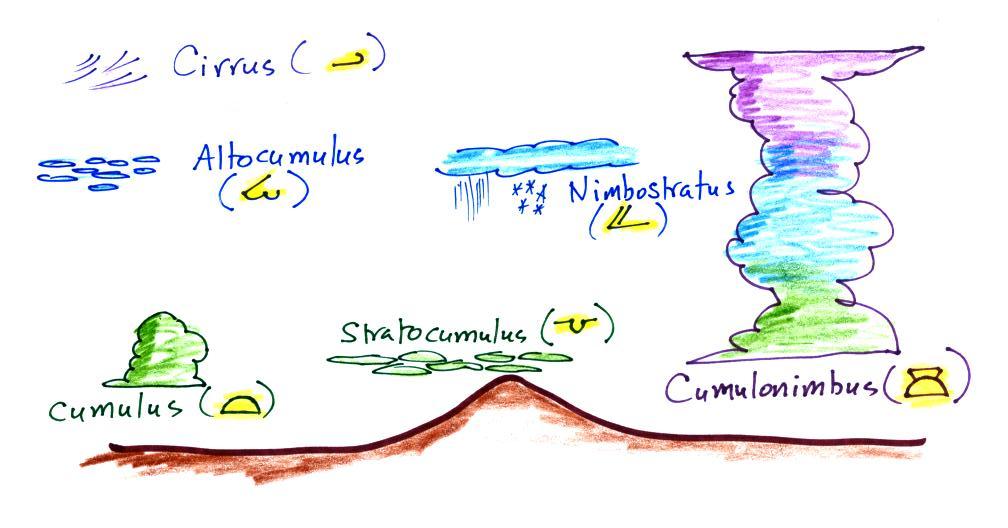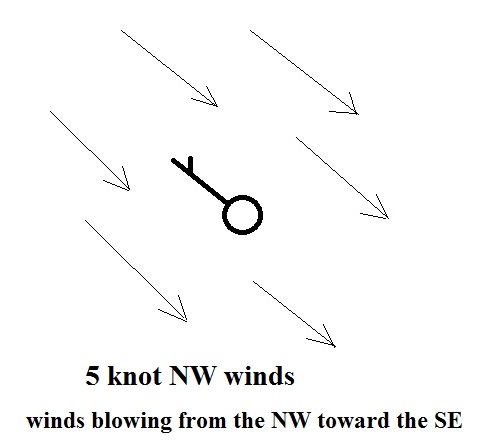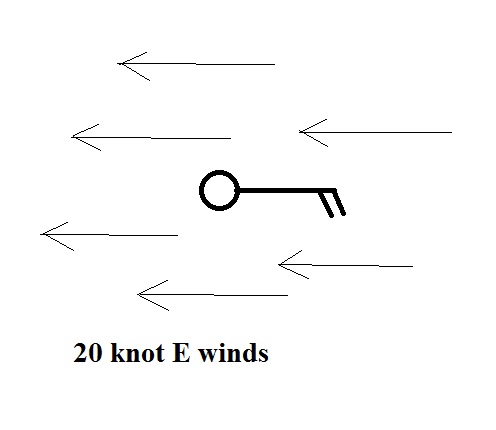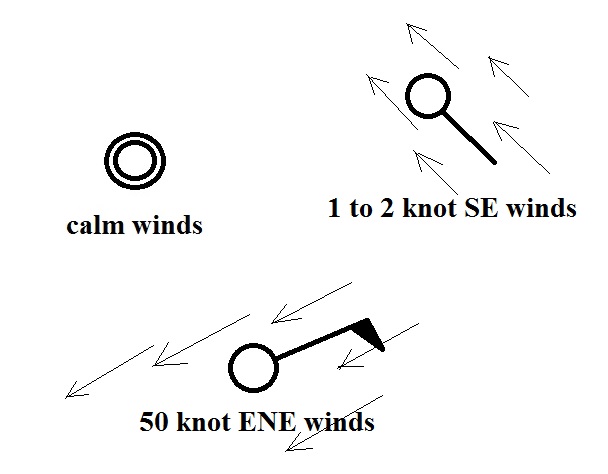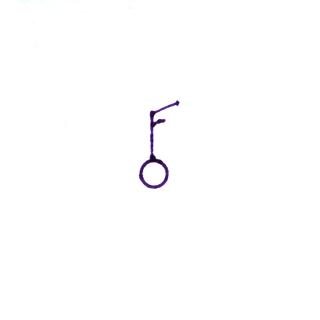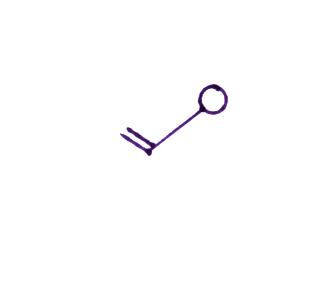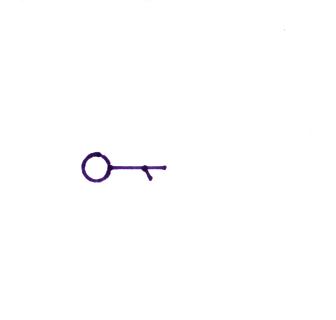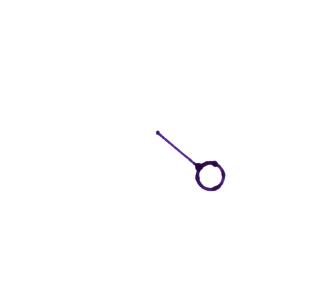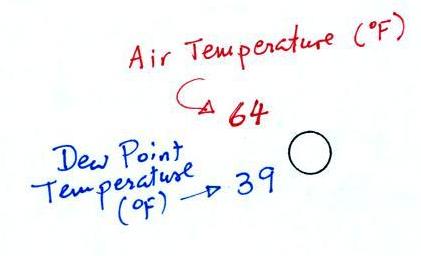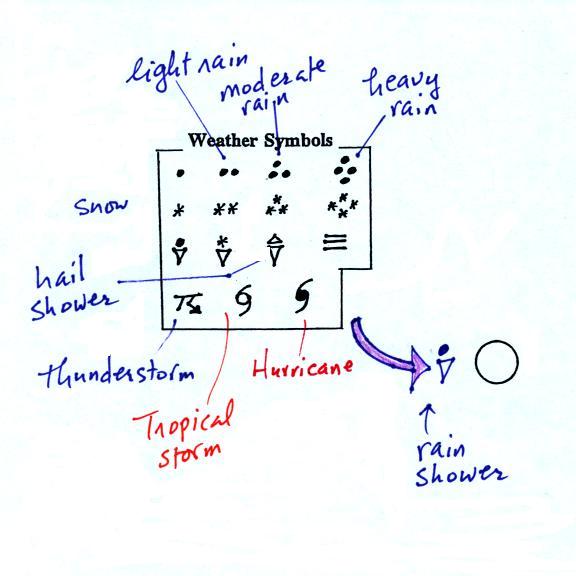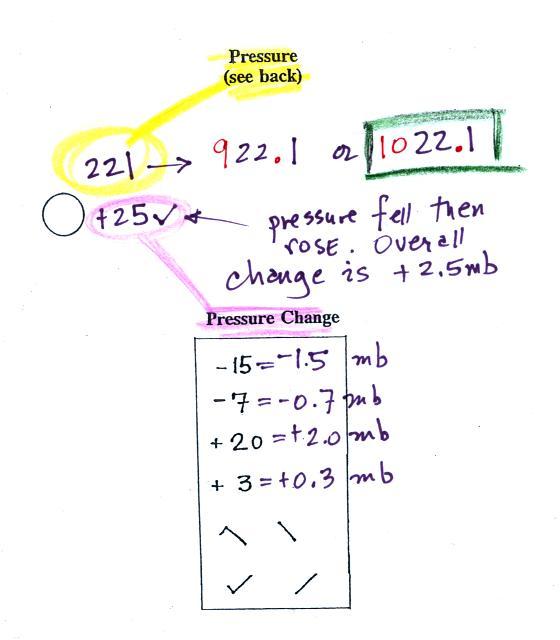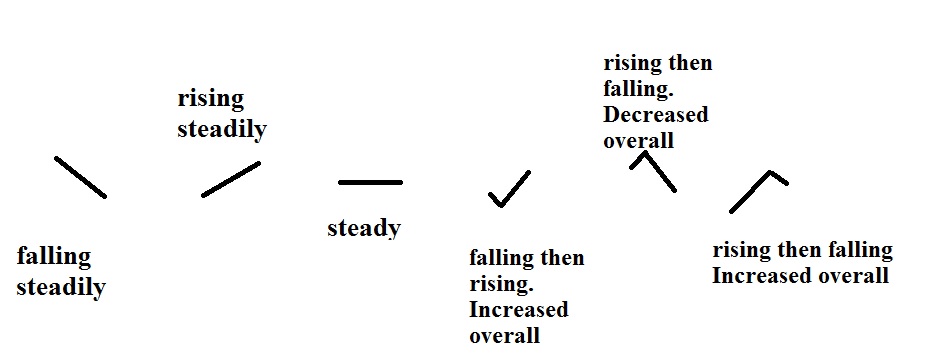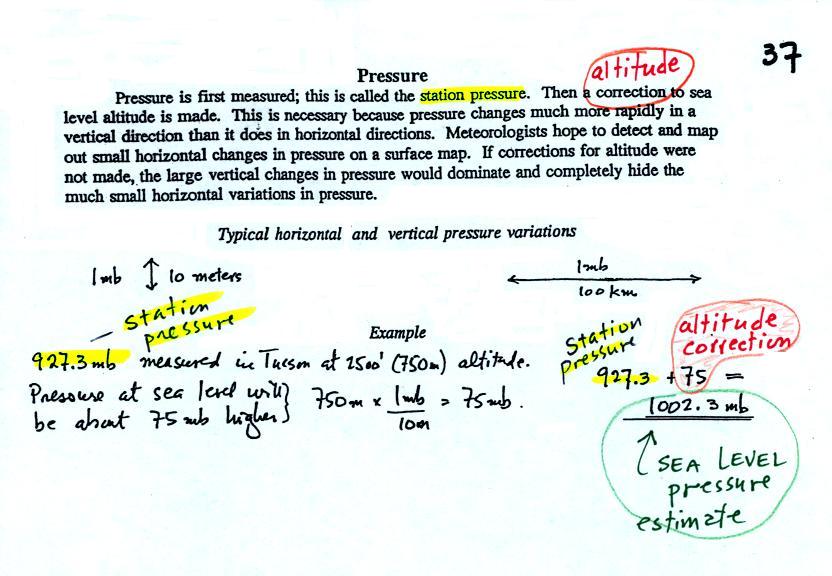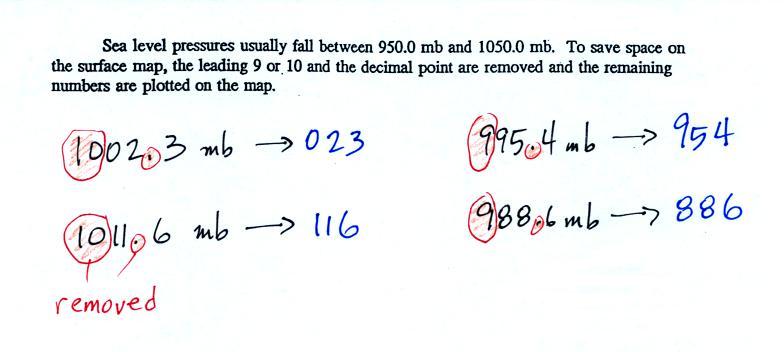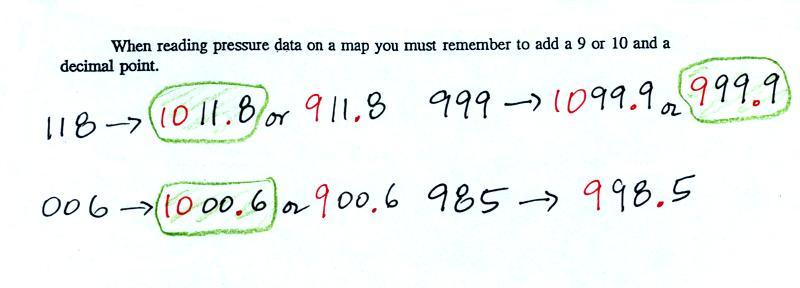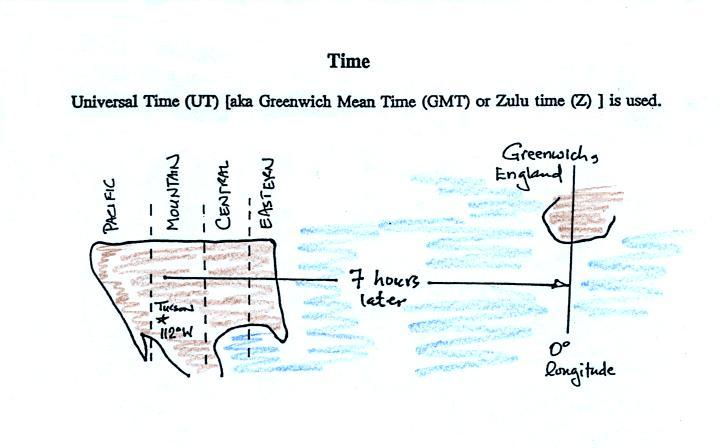An example of a
surface map like was shown in class today is shown
above (this is the 2 pm MST map for Sep. 17 and
differs a little bit from the 8 am map shown in
class). Maps like this are available here.
The entry for Tucson has been cut out, enlarged
slightly, and pasted in below.

The 2 pm MST
weather conditions for Tucson. The temperature
(95 F) and the dew point temperature (58 F) can be
read directly. Winds were from the NW at 10
knots, this is something you'll learn to decode.
One-quarter of the sky (1/4 of the center circle) was
covered with clouds and the (sea level) pressure was
1008.6 mb (derived from the 086 value to the upper
right of the center circle).
We worked through this
material one step at a time (refer to p. 36 in the
photocopied ClassNotes).
Meteorologists determine how much of the sky is covered
with clouds and try to identify the particular types of clouds
that are present.
Here are several examples of
conversions between MST and UT.
to convert from MST (Mountain Standard Time) to UT
(Universal Time)
10:20 am MST:
add the 7 hour
time zone correction ---> 10:20 + 7:00 = 17:20
UT (5:20 pm in Greenwich)
2:45 pm MST :
first convert to
the 24 hour clock by adding 12 hours 2:45 pm MST +
12:00 = 14:45 MST
then add
the 7 hour time zone correction ---> 14:45 + 7:00 =
21:45 UT (7:45 pm in England)
7:45 pm MST:
convert to the
24 hour clock by adding 12 hours 7:45 pm MST + 12:00 =
19:45 MST
add the 7 hour time zone correction ---> 19:45 + 7:00 =
26:45 UT
since this is greater than 24:00 (past midnight) we'll
subtract 24 hours 26:45 UT - 24:00 = 02:45 am the
next day
to convert from UT to MST
15Z:
subtract the 7
hour time zone correction ---> 15:00 - 7:00 = 8:00 am MST
02Z:
if we subtract
the 7 hour time zone correction we will get a negative
number.
So we will first add 24:00 to 02:00 UT then subtract 7 hours
02:00 + 24:00 = 26:00
26:00 - 7:00 = 19:00 MST on the previous day
2 hours past midnight in Greenwich is 7 pm the previous day
in Tucson
